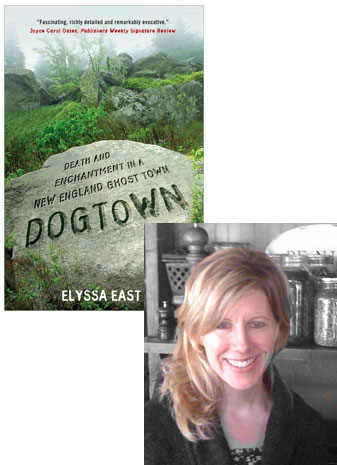How Chris Bohjalian Wound Up Wearing Another Man’s Boxers

Chris Bohjalian is on the road again—kicking off the tour for his latest novel, Secrets of Eden, tomorrow night in his home state of Vermont, after which, as he explains below, he won’t be back for over a month. A lot can happen in that amount of time… and in this essay, the bestselling author of Midwives talks about one of the most unusual vicissitudes he’s endured during his nomadic phases.
Since Up in the Air first arrived in theaters in December, I have heard from readers around the country presuming that my life in some fashion resembles Ryan Bingham’s—the obsessively frequent flyer created by Walter Kirn for his terrific novel of the same name and brought to life on the screen by George Clooney.
It’s not that readers imagine for even a nanosecond that I am clicking shut my hotel room door with Vera Farmiga or that I have anywhere near the movie star flair (or leading man jaw) of Clooney.
It’s the reality that Ryan Bingham is so comfortable on airplanes, in airports, and on the road. As a touring novelist, last year I traveled at least 125,000 miles on two separate book tours and visited no fewer than 47 cities—some twice. On February 1, I leave on a book tour for my new novel, Secrets of Eden, and I won’t be home in Vermont until March 7.
But there the parallels between Bingham and me end. It’s not simply that I’m happily married and Bingham is not. It’s that Ryan Bingham’s life on the road is freakishly glamorous and somehow he manages to find that one Airbus with first class linking Wichita and Omaha. Like most touring novelists, I tend to live on 50- and 70-seat regional jets with seats the same size as the ones found around a kindergarten table.
31 January 2010 | guest authors |
Elyssa East & The Strange Influence of Dogtown

Elyssa East discovered Dogtown, the 3,000 acres of woodland surrounding the ruins of a colonial settlement adjacent to Gloucester, Massachusetts, through a series of paintings Marsden Hartley had done of its landscapes in the 1930s. “Initially I was just curious because they didn’t look like the United States,” she said of the paintings during a recent conversation. “They looked like a far-flung section of the Outer Hebrides.” As she researched the backstory behind the work, she was “stunned” to learn about how Hartley credited his time at Dogtown with healing him from a depression he firmly believed would otherwise have killed him. She was fascinated by the idea that a location could exert an influence so strong as to actually change our lives, and as local resident echoed a belief in Dogtown’s power, her interest grew—moreso as they began to specifically assert a negative influence, many of them referencing a savage murder that had taken place in the forest in 1984. “The degree to which people began to identify the place with the tragedy astounded me,” East confessed. One man openly suggested to her that Dogtown influenced the murderer; other people were more reluctant to put that on the record, but the idea was definitely there.
Dogtown combines three stories: the early history of the settlement, an account of the murder and the subsequent investigation, and East’s own encounters with the area and its residents. “I tried lots of narrative possibilities,” she said when asked about the writing process, “and it became obvious early on that the murder was a turning point for the community and their feelings about the place.” Although there is a certain amount of “quest-narration” in her first-person accounts of visits to Dogtown, “I’m really a minimal presence in the book,” she insisted. “I like the Joseph Mitchell school of just stepping back and recording what’s happening around you.”
If you live in New York, you can hear for yourself tomorrow night just how effective East’s powers of observation were—she’ll be reading at KGB with Oona Patrick as part of the Paragraph reading series.
28 January 2010 | interviews |

 Our Endless and Proper Work is my new book with Belt Publishing about starting (and sticking to) a productive writing practice.
Our Endless and Proper Work is my new book with Belt Publishing about starting (and sticking to) a productive writing practice. 
